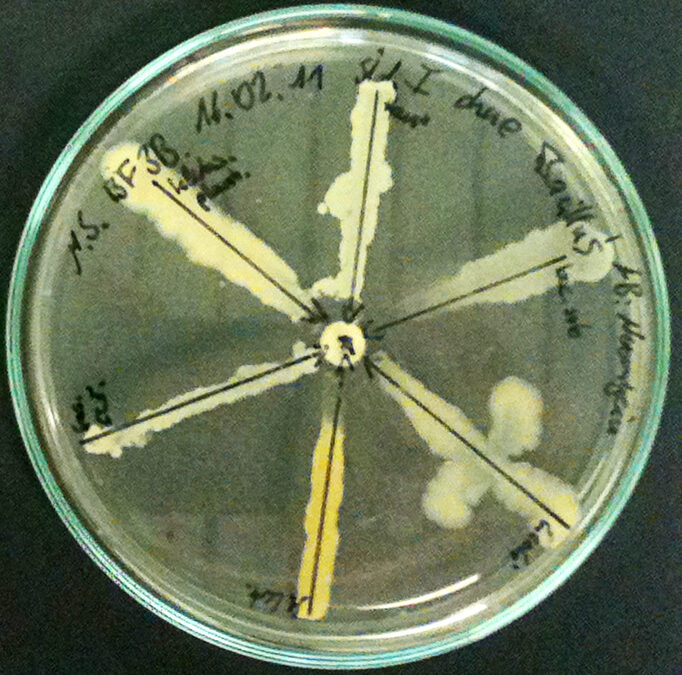By Sara Moraca A new study published in The Lancet predicts that more than 39 million people could die from antibiotic-resistant infections by 2050.
This research, conducted by the Global Research on Antimicrobial Resistance (GRAM)
Project, represents the first in-depth global analysis of antimicrobial resistance (AMR) trends between 1990 and 2021 and their projections through mid-century.
The study examined 204 countries and territories, drawing a troubling picture for the future of global health. The Global Impact of Antibiotic Resistance According to the study, between 1990 and 2021, more than one million people died each year from AMR-related infections.
This number, however, is set to increase dramatically in the coming decades.
Researchers estimate that by 2050, deaths caused directly by antibiotic-resistant infections could increase by 70 percent, from 1.14 million in 2021 to 1.91 million.
At the same time, the number of deaths in which resistant bacteria play an indirect role could increase by 75 percent, from 4.71 million deaths per year to 8.22 million.
One of the most striking aspects of this analysis is the change in the distribution of deaths by age group.
Between 1990 and 2021, deaths caused by AMR among children under the age of five decreased by 50%, due to significant improvements in prevention and control of childhood infections, such as vaccination programs.
However, over the same period, deaths among the elderly, over the age of 70, have increased by 80 percent.
This trend is set to continue: by 2050, the number of deaths among children under five will continue to decline, halving further, while deaths among the elderly will double. Antibiotic resistance: a global health crisis Antibiotic resistance is considered a major threat to global public health.
When bacteria or other pathogens become resistant to antimicrobials, treating common infections becomes increasingly difficult, if not impossible.
This resistance develops when microorganisms evolve in such a way that they no longer respond to drugs designed to eliminate them, making treatments that once worked ineffective.
According to Prof. Mohsen Naghavi, head of the AMR research team at the Institute of Health Metrics and Evaluation (IHME) at the University of Washington, USA, “Antimicrobial drugs are a mainstay of modern health care, and the rise of resistance to them is a cause for great concern. These findings highlight that AMR has been a significant threat to global health for decades and that this threat is growing.”
Despite the growing awareness of the severity of antibiotic resistance, until now there has been no detailed analysis examining historical trends in AMR and providing predictions of future global impact. The first GRAM study, published in 2022, had already revealed the enormous scale of the problem, showing that global deaths associated with AMR in 2019 exceeded those caused by HIV/AIDS and malaria, leading directly to 1.2 million deaths and contributing to an additional 4.95 million. Key Data and Future Projections The GRAM study examined 22 pathogens, 84 pathogen-drug combinations, and 11 infectious syndromes (including meningitis and bloodstream infections) among people of all ages in 204 countries and territories.
Estimates were produced using statistical models based on more than 520 million individual records, including hospital data, death certificates, and information on antibiotic use.
This approach made it possible to produce detailed predictions of AMR evolution, not only globally but also regionally.
According to these projections, antibiotic-resistant infections will cause the most deaths in South Asia, a region that includes countries such as India, Pakistan, and Bangladesh, where AMR is projected to be responsible for 11.8 million deaths between 2025 and 2050.
Other regions in Southeast Asia, East Asia, and sub-Saharan Africa will also be significantly impacted.
Regions with the greatest increase in deaths caused directly by AMR between 1990 and 2021 include western sub-Saharan Africa, tropical Latin America, high-income North America, Southeast Asia, and South Asia.
In these areas, the number of annual deaths increased by more than 10,000 over the period analyzed.
In particular, methicillin-resistant Staphylococcus aureus (MRSA) infections caused the largest increase in deaths globally.
In 2021, these infections were responsible for 130,000 deaths, more than double the 57,200 in 1990.
Among Gram-negative bacteria, known to be highly resistant, the most worrisome increase was in carbapenemase resistance, with 216,000 deaths in 2021 compared to 127,000 in 1990. Urgent action to prevent a health crisis According to the study authors, it is still possible to reverse this trend, but urgent action is needed.
Projections indicate that improving access to health care and antibiotics could save up to 92 million lives between 2025 and 2050.
The most effective interventions would be in South Asia, sub-Saharan Africa, and Southeast Asia, where 31.7 million, 25.2 million, and 18.7 million deaths could be avoided, respectively.
Another scenario that could save millions of lives involves the development of new antibiotics specific to Gram-negative bacteria.
It is estimated that this type of innovation could prevent 11.08 million deaths globally over the same period.
“We have made significant progress in combating antibiotic resistance, especially among children, but our results indicate that much more needs to be done to protect the world’s population from this growing threat,” said Prof Stein Emil Vollset of the Norwegian Institute of Public Health and IHME affiliate professor.
“To prevent a global health disaster, it is essential to implement new strategies, such as vaccine development, new drugs and more effective management of existing antibiotics.”
- GBD 2021 Antimicrobial Resistance Collaborators. Global burden of bacterial antimicrobial resistance 1990-2021: a systematic analysis with forecasts to 2050 Lancet.
2024 Sep 28;404(10459):1199-1226.
DOI: 10.1016/S0140-6736(24)01867-1

